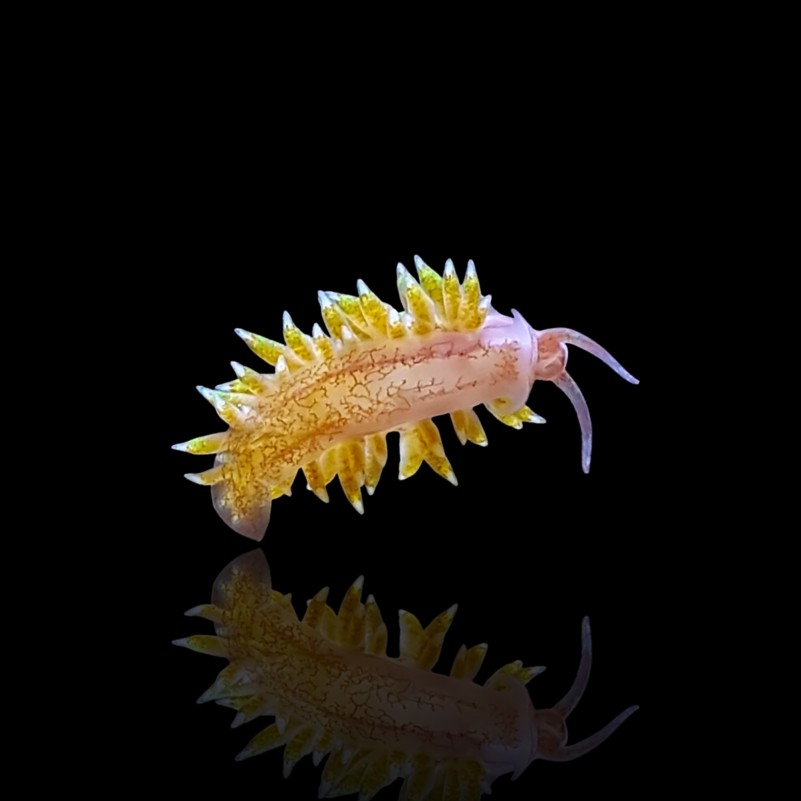





No one offers a better selection of healthy marine fish and invertebrates for the saltwater aquarium than Reeffishcenter. From angels, to clownfish, gobies,...
Berghia nudibranch can be described as a small sea slug, measuring about ½ – ¾ of an inch (1 – 2 cm) in length (adults), fully grown adults are typically 1 – 1½ inches (2.5 – 3 cm) in length whereas juveniles being sold in aquarium stores range between ¼ – ½ in length (about 1 cm).
When it comes to appearance, Berghia nudibranch can be identified by its whitish or semi-translucent body. This sea slug has a conspicuous head that bears two long tentacles— these tentacles act as a chemoreceptor (to test food quality). At the back of the oral tentacles, you will spot the rhinophores; these look like the oral tentacles but they are visibly shorter, and they also function as chemoreceptors, helping to detect distant food sources within the environment.
Furthermore, the eyes of Berghia can be located behind the rhinophores; these are capable of rudimentary vision and light sensory.
At the back of the nudibranch are multiple protrusions or tassels known as cerata, and they are regarded as an extension of the digestive system.
The cerata is responsible for two main roles— they facilitate oxygen exchange and bear cnidosacs at the tips. These act as a defensive mechanism and contain nematocysts i.e. stinging cells which they obtain from Aiptasia anemones consumed.
Berghia nudibranch absorbs immature nematocysts from Aiptasia and allows them to mature within. The nudibranch is capable of releasing the cerata which contain stinging cells to ward off aggressive predators.
In addition, Berghia nudibranch are known to hold zooxanthellae — the photosynthetic symbiotic algae found in corals, through symbiosis the sea slugs can utilize zooxanthellae obtained from their prey (Aiptasia) as an alternative food source. However, this food source is not capable of sustaining Berghia nudibranchs for long periods, hence they must be offered ample supply of Aiptasia to survive.